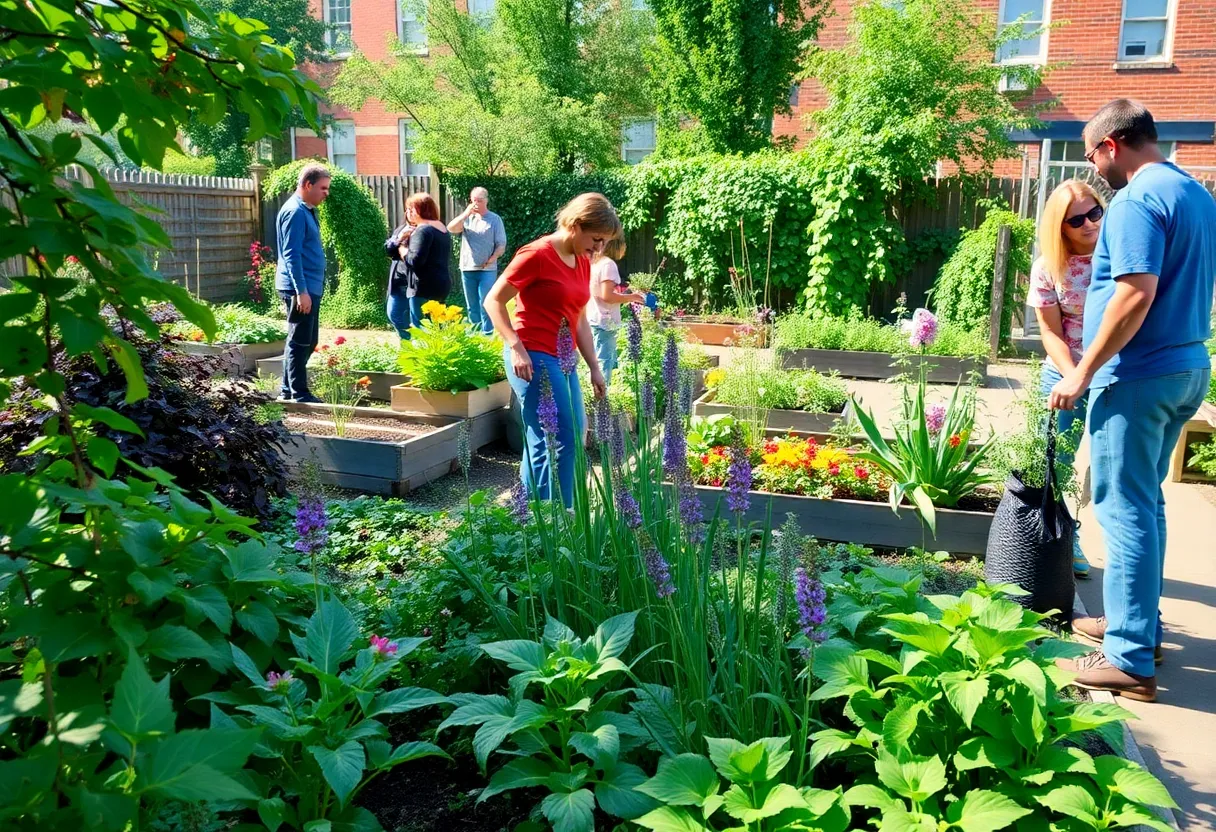10 Essential Tips for Creating a Beautiful Community Garden in Philadelphia
Introduction
Establishing a community garden in Philadelphia offers numerous benefits—from improving urban aesthetics to fostering social cohesion. Success hinges on strategic planning, community involvement, and sustainable practices. This comprehensive guide highlights ten foundational steps to create a vibrant, productive, and enduring community garden. Each tip emphasizes practical actions rooted in local resources, environmental responsibility, and community empowerment.
1. Understand the Legalities and Secure Land Access
The first critical step involves navigating legal frameworks and securing access to land. Urban agriculture in Philadelphia often utilizes vacant lots, underused parcels, or city-owned properties. It is essential to:
- Identify land ownership status.
- Consult city ordinances regarding community gardens.
- Secure agreements or leases with landowners.
Many city resources exist to facilitate this process, such as urban agriculture initiatives and land trust programs. These resources provide guidance on permits, zoning regulations, and long-term land use agreements. Proper legal groundwork prevents future conflicts and ensures the sustainability of the garden.
2. Form a Dedicated and Diverse Team
A successful community garden depends on a committed team that reflects the local diversity. Key considerations include:
- Recruiting individuals with various skills—horticulture, organization, outreach.
- Establishing clear roles—plot managers, event coordinators, maintenance crews.
- Fostering inclusive participation across different community groups.
Regular meetings and transparent communication channels foster cohesion, shared ownership, and accountability. Engaged members are more likely to sustain the project long-term.
3. Choose an Appropriate Location
Selecting the ideal site requires careful assessment of several factors:
- Sunlight: Ensure the site receives at least 6 hours of direct sunlight daily.
- Water access: Proximity to water sources simplifies irrigation.
- Soil quality: Test soil health to determine contamination or suitability.
- Accessibility: Position the garden near transportation routes and pedestrian pathways.
Utilize local tools and publicly available data to identify sites that meet these criteria. The location’s accessibility directly influences participation levels and community engagement.
4. Plan the Garden Layout
Efficiency and usability depend on a well-designed layout. Consider:
- Dividing land into individual plots for diverse gardeners.
- Creating communal spaces, such as seating areas or educational zones.
- Implementing pathways for ease of access and maintenance.
- Using raised beds to improve soil control, reduce pests, and increase accessibility for seniors or disabled gardeners.
A thoughtful plan maximizes land use, enhances visual appeal, and facilitates smooth operation.
5. Select Suitable Plants
Plant choices should align with Philadelphia’s climate and soil conditions. To ensure vitality:
- Prioritize native species that are resilient and support local ecosystems.
- Include vegetables like tomatoes, peppers, or leafy greens that mature within the growing season.
- Incorporate fruits such as strawberries or blueberries for diversity.
- Add flowers to attract pollinators and create aesthetic appeal.
A mix of plant types sustains biodiversity, improves soil health, and extends the harvest season.
6. Implement Sustainable Practices
Environmental responsibility enhances long-term viability. Adopt practices like:
- Composting: Use organic waste to create nutrient-rich soil amendments.
- Rainwater harvesting: Collect and reuse rainwater for irrigation to reduce water costs.
- Organic pest control: Use natural methods—such as introducing beneficial insects—to manage pests.
- Choosing resilient plants and maintaining soil health reduces the need for chemical interventions.
Sustainable practices promote ecological balance and reduce operational costs.
7. Engage the Community
Active engagement ensures the garden’s relevance and long-term success. Strategies include:
- Hosting regular workshops on gardening techniques, sustainability, and nutrition.
- Organizing volunteer days to share maintenance responsibilities.
- Partnering with local schools and organizations to create educational programs.
- Facilitating events like harvest festivals to celebrate milestones.
Community involvement fosters ownership, pride, and a shared sense of achievement.
8. Establish Maintenance and Governance Structures
Clear governance models are key to smooth operation:
- Create guidelines for daily maintenance—watering, weeding, pest management.
- Develop a schedule that rotates responsibilities evenly among members.
- Implement democratic decision-making processes for major changes.
- Establish conflict resolution procedures to handle disputes equitably.
A well-organized structure preserves harmony and operational efficiency.
9. Seek Funding and Resources
Financial and material resources sustain the garden’s growth:
- Apply for grants focused on urban agriculture and community development.
- Engage local businesses for donations or sponsorships.
- Organize fundraising events or benefit sales.
- Leverage in-kind donations—tools, seeds, soil amendments—to reduce costs.
- Host seasonal harvest festivals—public gatherings that showcase the garden’s bounty.
- Share produce with local food banks, underscoring the garden’s community service role.
- Document milestones via photos, videos, and stories to inspire others.
- Highlight stories of individual gardeners’ journeys and successes.
Building a diverse funding base ensures the garden’s resilience against financial fluctuations.
10. Celebrate and Share Successes
Recognizing achievements motivates continued participation:
Celebrations reinforce community bonds and demonstrate the garden’s positive impact.
Conclusion
Developing a thriving community garden in Philadelphia is a strategic process grounded in legal awareness, community participation, environmentally conscious practices, and ongoing management. Proper planning and engagement create more than just a green space — they build a resilient ecosystem of shared purpose and local pride. Following these ten essential tips sets the foundation for a sustainable, beautiful, and impactful community garden that elevates both neighborhood aesthetics and social well-being.
Frequently Asked Questions
| Question | Answer |
|---|---|
| How do I find suitable land for a community garden? | Start by locating vacant or underused parcels through city mapping tools or local surveys. Ensure the land is accessible, receives adequate sunlight, and has water access. Consult city land use policies to confirm eligibility. |
| What legal considerations are involved? | Determine land ownership, obtain permissions or leases, and adhere to zoning laws and ordinances. Clear agreements prevent future disputes and ensure long-term use. |
| How can I involve diverse community groups? | Engage residents through outreach events, inclusive planning sessions, and collaboration with local organizations and schools. Promote participation across different demographics to foster inclusivity. |
| What sustainable practices should I adopt? | Implement composting, rainwater harvesting, organic pest control, and use native plants. These methods help preserve local ecosystems and reduce operational costs. |
| How do I secure funding? | Apply for grants, partner with local businesses, organize fundraising events, and leverage donations of supplies and equipment. |
| What are effective ways to promote the garden? | Host workshops, seasonal festivals, and educational programs. Share stories and progress through local media or social platforms to build community awareness. |
JSON-LD FAQ Structured Data
Key Features of a Successful Community Garden
| Feature | Details |
|---|---|
| Legal Clarity | Secure land access through proper agreements and compliance with local laws. |
| Community Engagement | Active participation fostered through inclusive outreach and educational events. |
| Strategic Location | Sites with sufficient sunlight, water, and accessibility to encourage involvement. |
| Thoughtful Design | Efficient layout with individual plots, communal spaces, and accessibility features. |
| Environmental Sustainability | Use of native plants, composting, rainwater harvesting, and organic practices. |
| Operational Structure | Clear governance, maintenance schedules, and conflict resolution protocols. |
| Funding Diversity | Grants, donations, and community-driven fundraising efforts ensure longevity. |
| Celebration & Documentation | Events celebrating milestones and storytelling to inspire continued support. |
Author: STAFF HERE PHILADELPHIA WRITER
The PHILADELPHIA STAFF WRITER represents the experienced team at HEREPhiladelphia.com, your go-to source for actionable local news and information in Philadelphia, Philadelphia County, and beyond. Specializing in "news you can use," we cover essential topics like product reviews for personal and business needs, local business directories, politics, real estate trends, neighborhood insights, and state news affecting the area—with deep expertise drawn from years of dedicated reporting and strong community input, including local press releases and business updates. We deliver top reporting on high-value events such as Mummers Parade, Philadelphia Flower Show, and Thanksgiving Day Parade. Our coverage extends to key organizations like the Greater Philadelphia Chamber of Commerce and United Way of Greater Philadelphia, plus leading businesses in telecommunications, food services, and healthcare that power the local economy such as Comcast, Aramark, and Children's Hospital of Philadelphia. As part of the broader HERE network, we provide comprehensive, credible insights into Pennsylvania's dynamic landscape.





